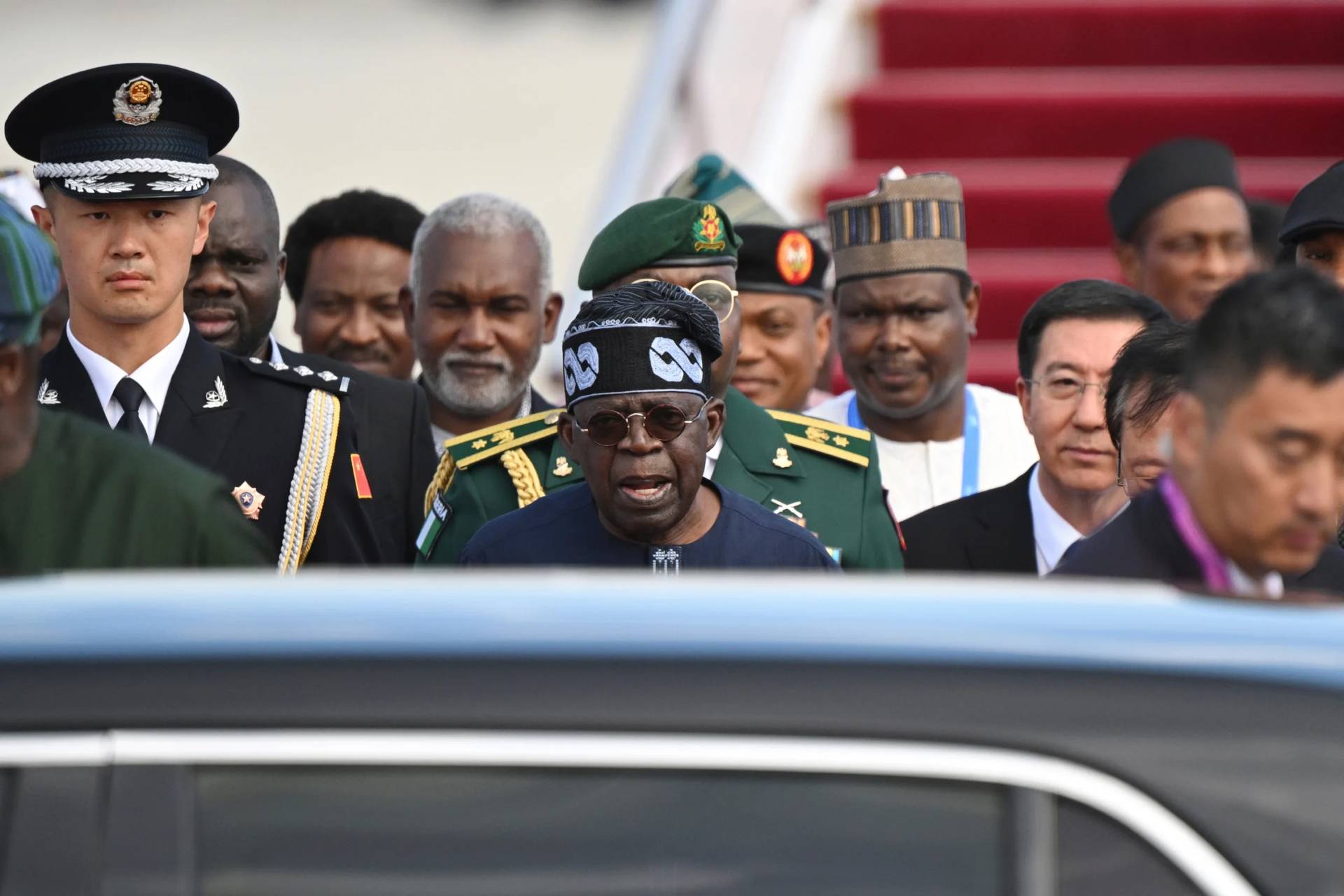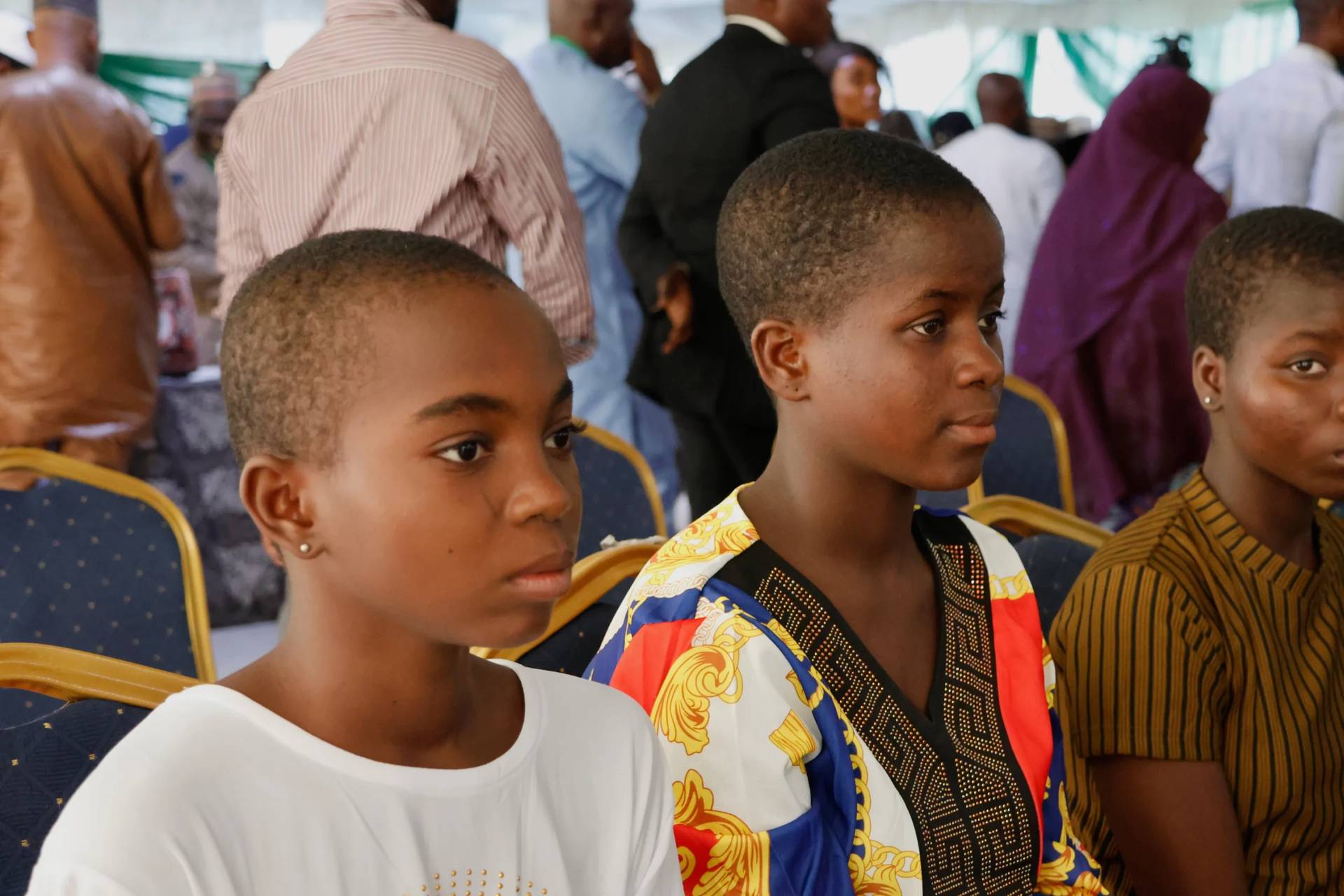YAOUNDÉ, Cameroon – Emily Pinna is a storyteller on a mission.
Through visual storytelling, Emily creates powerful emotions, evoking empathy and empowering people. Holder of a Master’s Degree in Social Design from the Maryland Institute of Art (MICA), a diploma in professional photography from The Washington School of Photography (WSP) and a MA in Communication from the University of Bonn/Germany, Emily says she is driven by a desire to foster social change.
She has been living in Cameroon since 2016, and her work caught the attention of Piarist Fathers.
“I was contacted by a Piarist Father – Father Peter – who found me on the Internet saying that he has observed my work for two years. And, so I listened to what the Piarist Fathers stand for, what they were doing,” Emily told Crux.
The Piarist Fathers work to bring education for the underprivileged, and they wanted Emily to document their work through visuals.
The result of that work is now exhibited at the Apostolic Nunciature in Cameroon. It captures kids displaying what is known as the Peace Plant.
The Apostolic Nuncio understands the significance of that plant in a typical Cameroonian context.
“We have a very beautiful plant which is the Peace Plant which is very typical of this region of Cameroon. It is used to decorate and to welcome people and to wish them well,” Archbishop Jose A. Bettencourt at the launch of the exhibition July 13.

Peace is a value we all share, and the Apostolic Nunciature would like to support initiatives that encourage peace. Peace begins in the hearts and the minds and we have an exposition which was an initiative of the Piarist Fathers, thanks to Emily Pina who captures emotions and the beauty of children found in the Piarist schools and they hold peace plants and express their feelings about peace,” the nuncio said.
In an interview with Crux, Emily Pina talks about the incredible work the Piarist Fathers are doing and how her visual storytelling can amplify that work.
Following are excerpts of that conversation…
Crux: What sparked your interest in photography?
Pina: I’m an artist. And photography is my best way to express myself. But also, what I’m mostly interested in is really creating impact with my photography – using the power of visual storytelling to make a difference.
Recently, you had this exhibition at the Nunciature in Cameroon. What was it about?
So the exhibition “Planting Peace” is really an interesting story. So at the beginning of this year, I was contacted by a Piarist Father, Father Peter, who found me on the Internet saying that he had observed my work for two years. So I listened to what the Piarist Fathers stand for, what they were doing.
He said they were doing incredible work and needed my services.
So he told me about all the schools they have. They have 14 schools all over Cameroon. The Piarist Fathers are really focused on education for the most underprivileged. So, basically, he said, look, we have these schools, and we need you. What can you do?
So I came up with a proposal. I said, look, let’s visit all these schools. I’ll take pictures, and I do what I call video stories. Video stories are, like, 2 minutes long videos based on my photography with captions, telling the story of a project or a program… So that’s what I did.
It’s about putting the human back in the center of communication. It’s about telling the story of one individual, kind of a hero’s journey, how this person has been touched by, in this case, by a school, and how it has changed their life. And this one person stands, of course, for many other people who have benefited from the program. So we went to these schools, and when I arrived at one of the schools in Bamendjou in the west region, the kids were waving at me with the “Peace Plant.”
And, in that particular school, you have a lot of children coming from the Anglophone regions where there is ongoing armed conflict and, of course, the host community kids. Father Peter mentioned that they have a lot of activities around peace building in that school. And, just the waving of the Peace Plant really inspired me.
I was really touched about the work the Piarist Fathers are doing. I said I would like to introduce them to the international community because people don’t know the incredible work they are doing. So I organized an exhibition called “Planting Peace” at the Mont Febe Hotel Yaounde. And we invited all the dignitaries, diplomats, and government representatives.
And so, the Planting Peace exhibition is really based on that peace building concept. It’s about instilling, seeding, peace in the hearts and minds of children because you have this unique moment where these children now are going to school together. And, obviously, the kids from the conflict zones are very traumatized. And if there is no mechanism, no help for them to overcome the trauma and also prepare the host community kids for this specific situation, it would remain a tenuous situation. And it was from the Mont Febe Hotel that the Apostolic Nuncio invited me to do the exhibition at the Nunciature as well.
Did you speak to the kids, particularly those from the conflict zones?
Father Peter and I did a workshop with 16 of these kids – eight from the host community, eight from the conflict zones. We asked the children to close their eyes and imagine a world without shouting and fighting. What would that look like? And then they were expressing their thoughts and their imagination.
And then, they came up with a song and a dance for peace around the Peace Plant, and we’re planting these peace plants in the school. And it was all about the importance of peace. And that’s how this whole exhibition came together.
So we have these 16 portraits of children, each of them holding the peace plant in the way they want to, and expressing themselves on what peace means to them.
And what did they say they understand by peace?
For example, you have one child saying, peace means for me to “wake up in the morning and go to school without fear.”
Another child says, “peace for me means sleeping in a house.”
Then some said “la paix c’est l’amour” meaning “peace is love.” Another said “la paix c’est l’absence de la baggare” (“peace is the absence of war.”) Another said “people need to love one another before they can live together in peace.”
And these children are all between, 9-14 years old.
If you were to paint a perfect picture of peace, what would it look like? Would it be a sort of Garden of Eden, or rather reflect a situation wherein people are free to exist even in the midst of turmoil?
I would paint the Peace Plant. Living in peace, social cohesion. Everyone can follow their different religions and beliefs and just be themselves. That’s what living in peace means for me, and people should be free also to express themselves in whatever way they want to.
You said earlier that the Peace Plant triggered your interest. What have you learnt about this plant as it applies to Cameroonian society?
I’ve been in Cameroon since 2016, so it’s not the first time that I’m encountering the Peace Plant. My knowledge is that it’s used as a symbol of peace between tribes if there were some disagreements and as a sign to make peace again, people would carry the peace plant. It’s used in different rituals in different ways.
And you also say that you want to use your photography to change the narrative about Africa.
Yes.
What kinds of stories are you using your photography to tell that would counteract the stereotypes associated with Africa in the Western media?
So I work a lot with different UN agencies, not only in Cameroon, but all over Africa. And, of course, the UN agencies are humanitarian organizations where, really, there is help offered to the most vulnerable.
But there is a way to go about it. There is a way to preserve the dignity of people, to show empowered people who maybe, struggled through their journey, but thanks to a program or whatever, they’re empowered to get out of that circle. And there is always a positive angle even in the most desperate situation. That’s my approach. You only see empowered people smiling, strong, and innovating. People in high professional positions; all those pictures that are rarely seen in the outside world.
The other approach is the book, “Thriving Africa,” which I published – it’s called Dynamic Creativity. This is really, because I feel like 80 percent of the visuals that we see in mainstream media is about famine, war, problems. 20 percent maybe is safari and folklore, but modern dynamic Africa, creative Africa is very underrepresented. And now we have the phenomenon of the Afrobeat going mainstream and all of that …There’s so much creativity going on all over the continent-the designers, the models, the creativity, and it’s so underrepresented.
What is the danger in telling only one side of a story, as seems to have been the case of western media about Africa?
The danger is that there is a complete misperception. I mean, it’s oh my God, we need to help Africa. Like it’s this pity show, right? So the goal for me is evoking emotions of compassion and empathy, but never pity. And what’s out there is all about pity. And this is not the way forward in my opinion.
Do you think your photography can lead to peace?
Yes. I think, for example, with this exhibition, Planting Peace, our desire, the Piarist Fathers and the Apostolic Nuncio, is really we are exploring a peace campaign. Of course, it is not only about photos. So we are envisioning billboards with just these simple messages of children expressing their desire for peace or their definition of peace.
And I think that can have an impact. Behavior change is the hardest to tackle. It needs to have activities around it, discussions, having Imams, Priests, and chiefs, reflecting and discussing what can be done about peace building. The beautiful thing about peace is that it doesn’t take sides. It’s not about the government or the separatists. This is peace. It’s of course, with the support of the Church, because the Church is neutral. We’re just trying to see peace.
So yes, I believe that photography can have its role in building peace, because it can change public perceptions if it touches the heart of people.

















